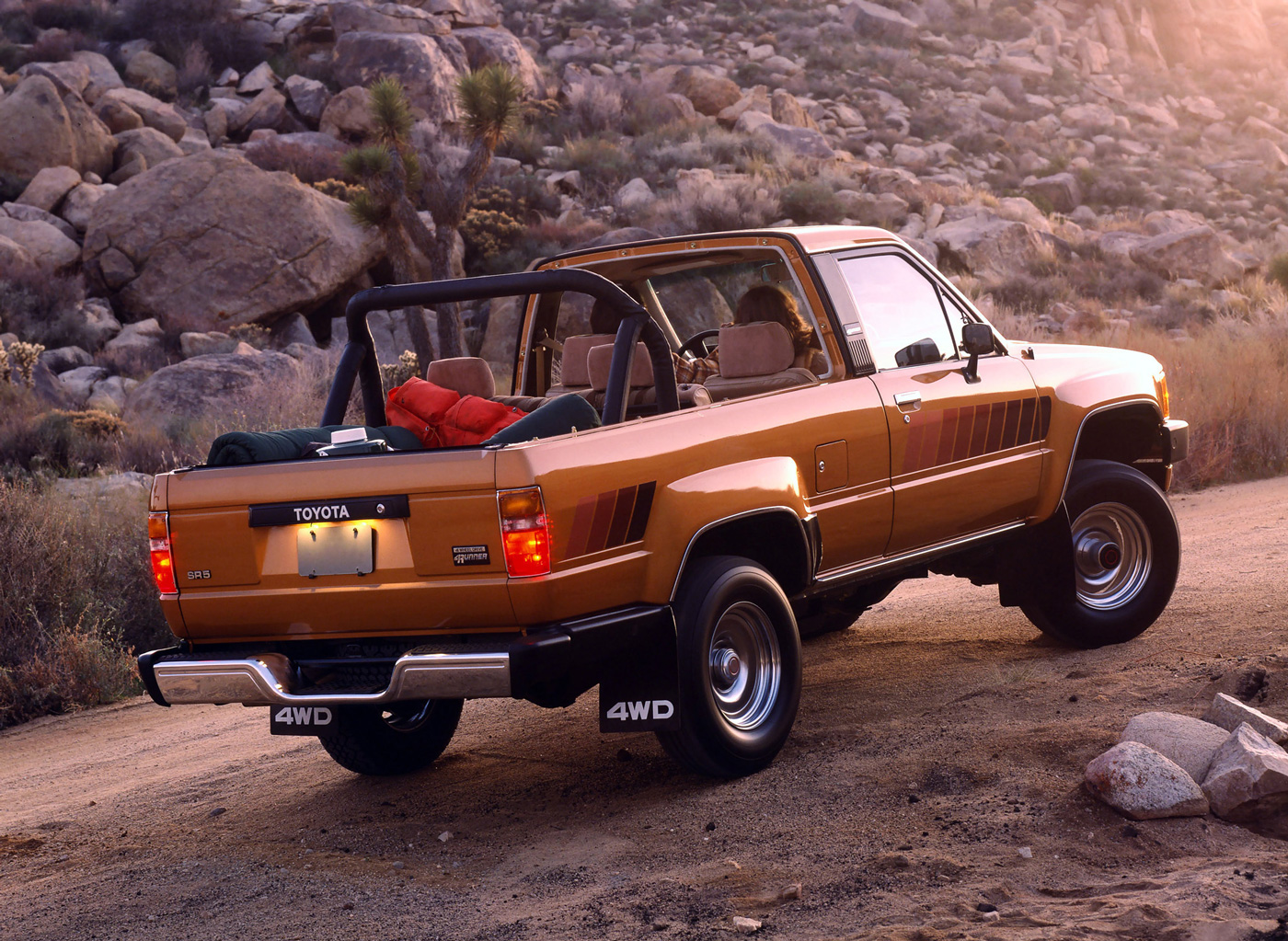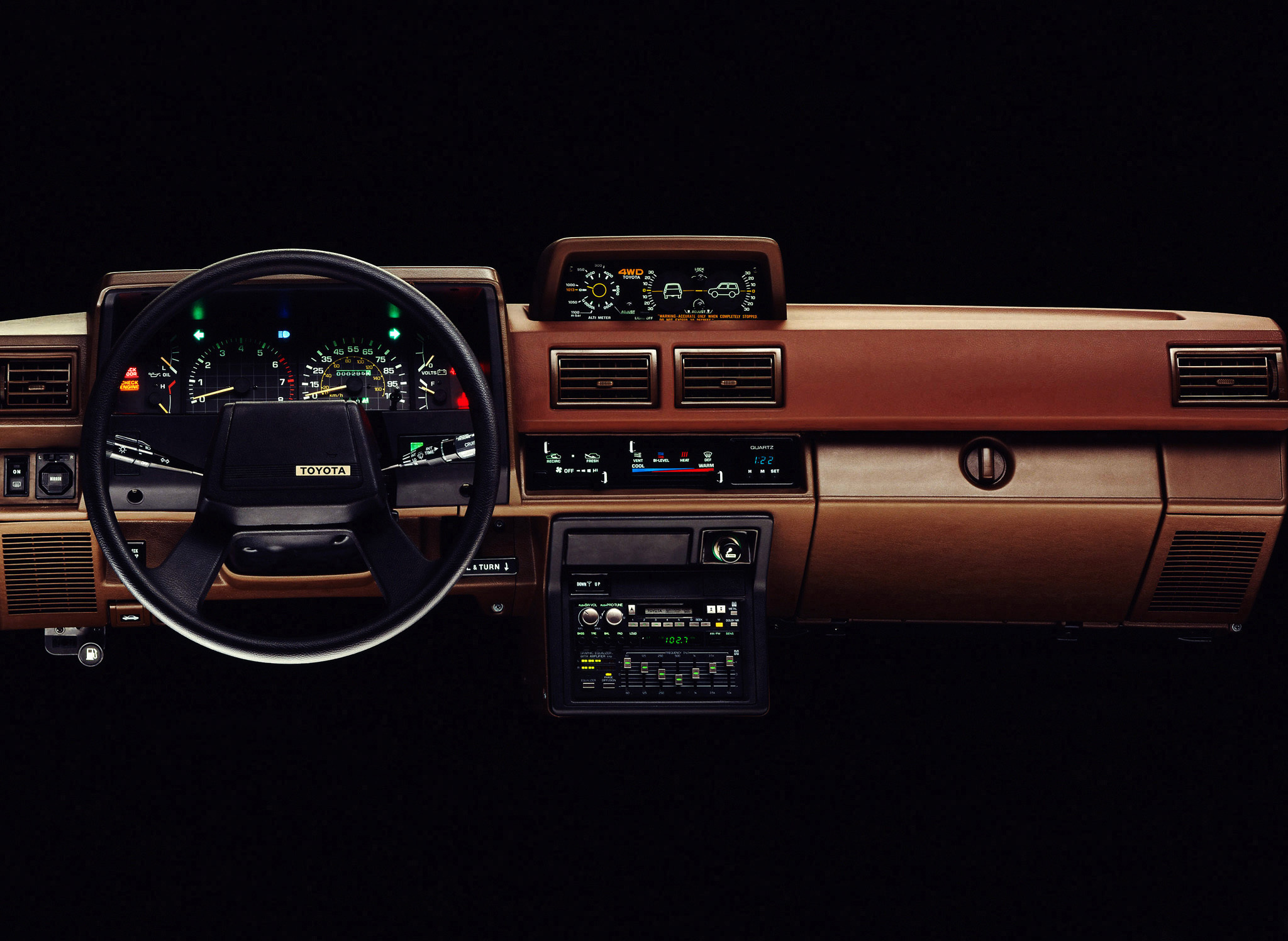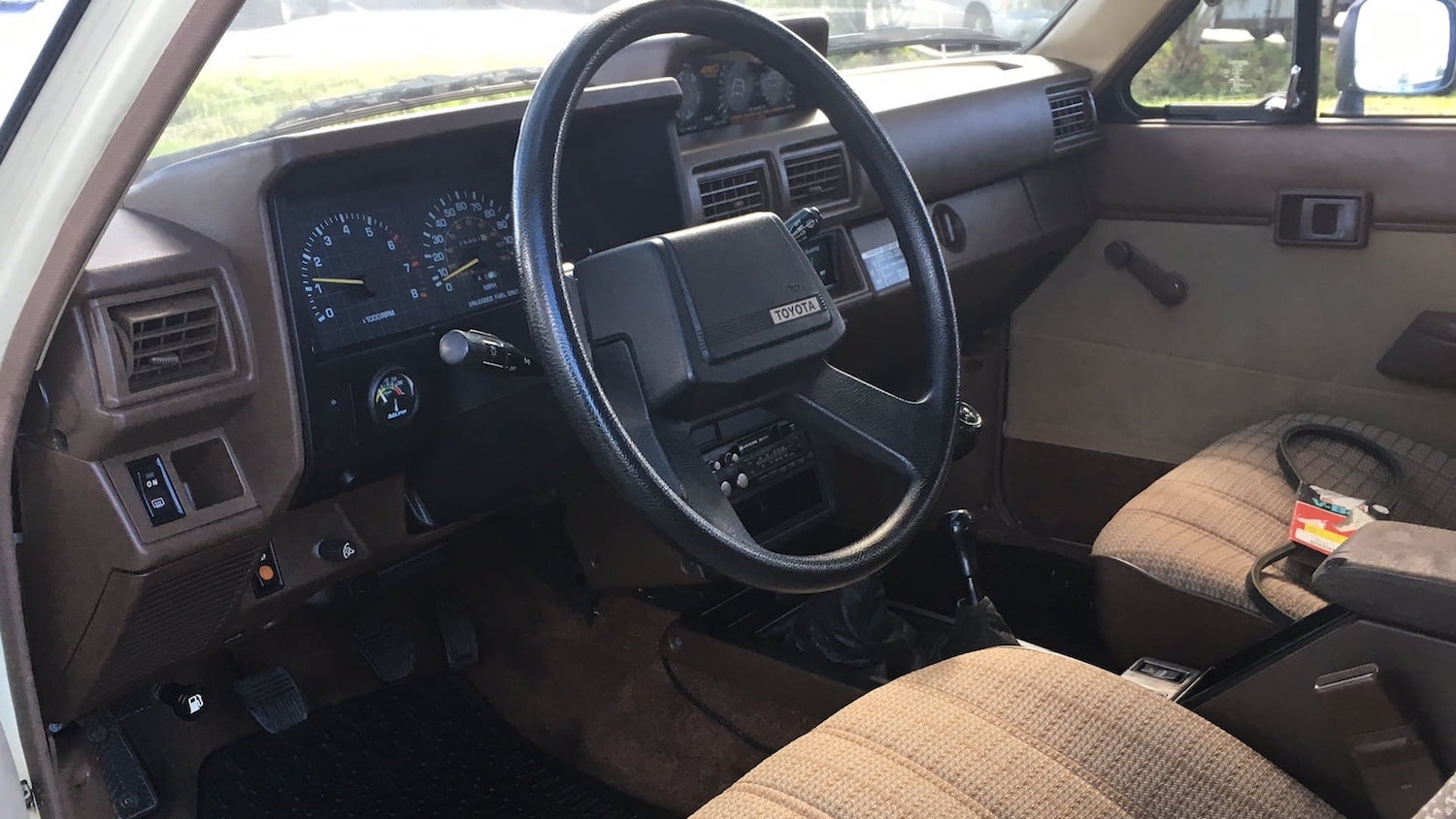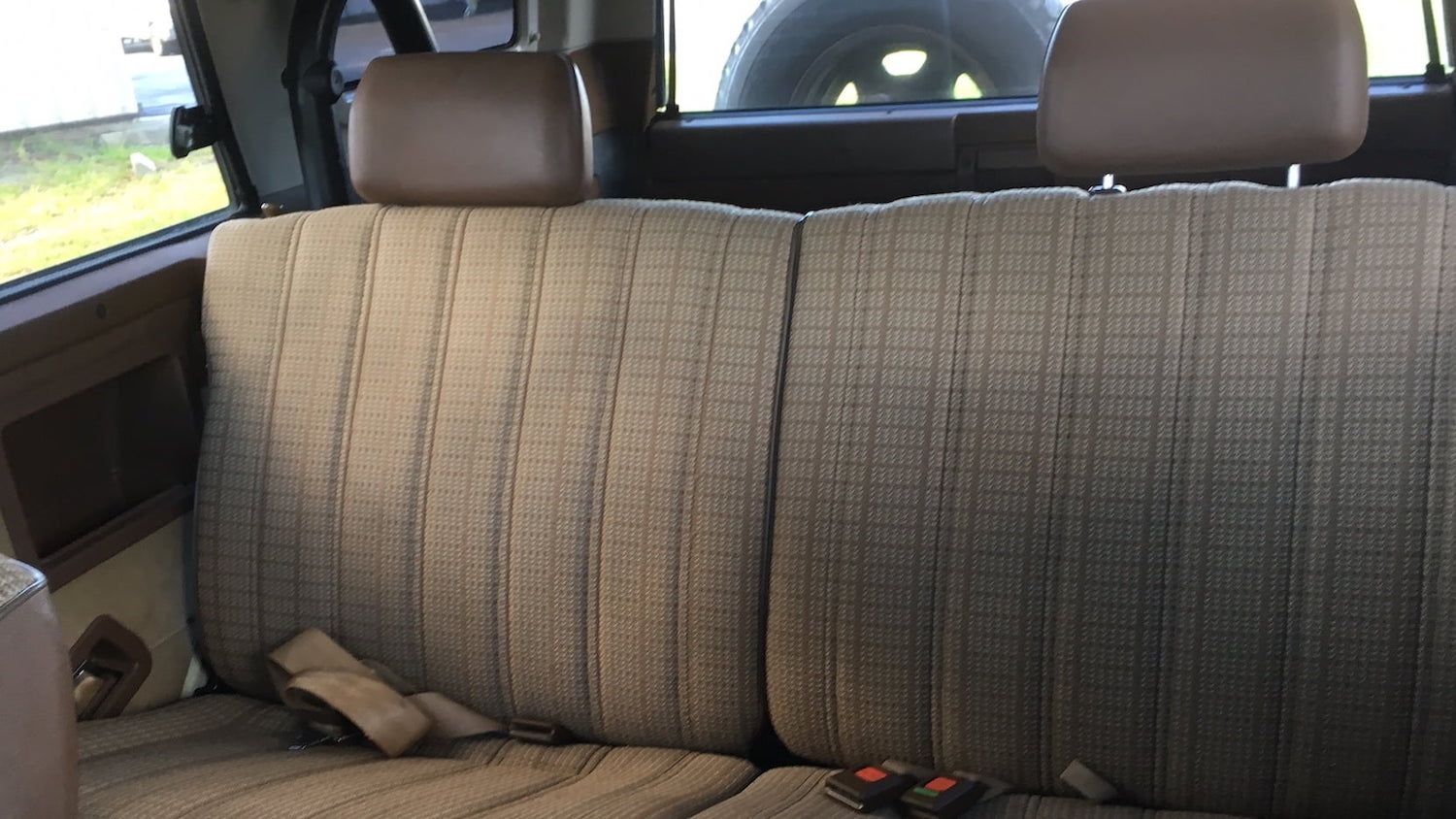The rise of 1984–89 Toyota 4Runners can’t be ignored
The first-generation Toyota 4Runner was one sneaky little ute. Built in Tahara, Japan, legend has it that it was simply a light truck disguised as a passenger vehicle so Toyota could avoid the infamous “Chicken Tax,” a 25-percent tariff that President Lyndon Johnson imposed in response to French and West German tariffs on U.S. chicken in 1964.
While the Chicken Tax may have been a factor, the 4Runner traces its roots to a Toyota dealer in Wisconsin named Jack Safro. As Donut Media tells it, in 1980 Safro thought the hot-selling Toyota Hilux pickup truck would be even more beloved in the snowy Midwest if it had a rear fiberglass canopy and a few extra seats. So Safro got the OK from Toyota to reach out to Winnebago, and violà: the Toyota Trekker was born. All 1500 Trekkers built were sold, and Toyota took notice. Less than four years later, the 4Runner hit the market.
These days, the 1984–89 Toyota 4Runner is becoming a sought-after collector vehicle in the U.S., so much so that it was recently added to the Hagerty Price Guide after prices and insurance quotes began to rise.
“The number of 4Runners being added to our insurance policies has doubled over the past two years. They can’t be ignored,” says Hagerty valuation editor Andrew Newton. “We recently started formally tracking them because they’ve been getting more expensive over the past 2–3 years, plus they have an enthusiastic following. Some ’80s Toyota pickups have been getting some crazy results at auction.”
Notice he said “pickups.” Officially described as a “two-door, 4×4 utility vehicle,” the 4Runner—a name derived by combining “four-wheel drive” and “off-road runner”—was based on the mechanicals of Toyota’s tough four-wheel-drive pickup truck but had the added comfort of a passenger vehicle. The two-door 4Runner, which offered a removable fiberglass hardtop over the rear cargo area, came in two forms: one that emphasized utility and had more storage space, and the upgraded SR5, which featured a three-passenger seat in the rear that could be folded flat for additional storage space. It also had a larger fuel tank and an upgraded interior.

The 1984–87 4Runner received a 2.4-liter 22RE inline four-cylinder engine that generated 105 horsepower. An optional 3.0-liter, 150-hp six-cylinder arrived in 1988, but Logan Calkins, who has owned a dozen 4Runners over the years, says most enthusiasts avoid the six (“It isn’t very good,” he says) and opt for the four.
Calkins, who currently owns a 1987 SR5, points out that ’84–85 4Runners have a solid axle front end, “which is more popular for the off-roading community but doesn’t offer the smooth ride of later models,” which have independent suspension. Calkins says the 4Runner, the first utility vehicle to be called an “SUV” in marketing materials, became a four-door in late 1989.
“The 4Runner was the one of the last real removable hardtop SUVs of its era,” Calkins says. “The Bronco had a removable top, but for stability purposes Ford didn’t recommend taking it off.”
The average value for a first-gen 4Runner in #3 (Good) condition is $8400, but one in #2 (Excellent) condition jumps to $13,700, while one in #1 (Concours) condition rises to $21,100. It seems finding an early 4Runner that hasn’t been driven hard can be difficult; Calkins says finding one with nice seats is particularly problematic.

Regardless, he says, 4Runners are tough as nails and prove that “a car with more than 100,000 miles can still be considered low mileage.” To prove his point, while 4Runners have yet to make splash at larger public auctions, several 100,000-mile examples have brought decent money on Bring a Trailer. In June, a 100,000-mile 1984 SR5 sold for $19,250, while a 168,000-mile 1986 SR5 sold for $17,500 in May and a 142,000-mile ’86 SR5 went for $14,750 in August.
“Like a lot of vintage trucks and SUVs, 4Runners are very popular with younger buyers,” Newton says. “Millennials make up 34.4 percent of quotes for 4Runners (compared to 21.24 percent for the rest of the market), while Gen-Xers make up 45 percent of quotes (compared to 32 percent for the rest of the market).”
Calkins certainly loves his. “What’s great about 4Runners?” he asks. “Everything.”
Part of the reason for early 4Runners’ rise in popularity and value may be that they provide a cheaper alternative for collectors who’ve been priced out of the Toyota FJ40 Land Cruiser market. Indications are they may not stay that way for long, however.



20190905140153)
20190905140159)

20190905140142)
20190905140148)

20190905140209)





W.N. I.F. AL.A Sarah 4468 Cedar bush road Hayes Virginia 23072 804-642-2785 Joycel Komlo 615-535-2954 Nashville Tennessee 134324 car 4runner red
W.N. I.F. AL.A Sarah 4468 Cedar bush road Hayes Virginia 23072 804-642-2785 Joycel Komlo 615-535-2954 Nashville Tennessee 134324 1984-1989 car 4runner red